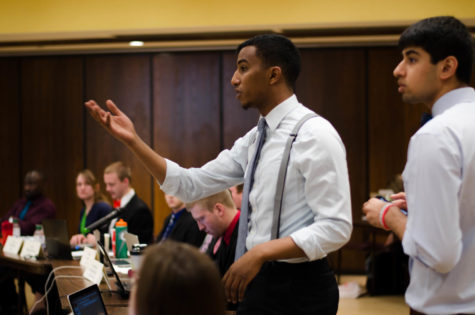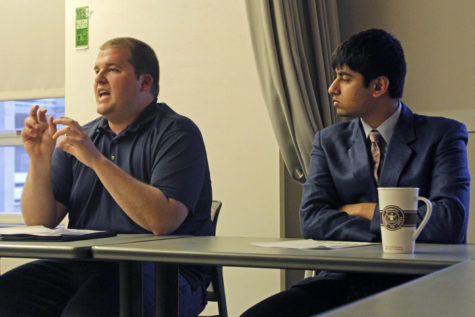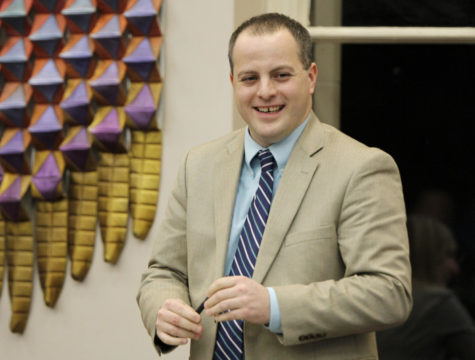Gold appoints prospective judges
February 24, 1997
Four students have been appointed by Government of the Student Body President Adam Gold for positions in the GSB Supreme Court, but the Senate has yet to approve them.
Chad Fleener, Tom Fleener, Joel Kincart and Mark Holm, a GSB senator, all await Wednesday’s Senate meeting to find whether they will become the judges who help restart the currently inactive Supreme Court.
The Senate will also consider promoting David Bare, a justice on the Supreme Court, to chief justice. Aaron Cooper is the current chief justice, but he is planning to step down.
Gold submitted the nominations to the Senate Judiciary Committee chairman, Casey Powers. The Senate Judiciary Committee has interviewed the appointees and submitted a bill to the Senate recommending them to the Supreme Court.
Powers said the Senate would most likely approve of the nominations.
“I think they will, but I’m not sure,” Powers said.
Gold was undecided about whether the Senate would approve his nominations.
“With this Senate, I don’t know. All these individuals are good individuals; they’re involved. There is no reason not to [appoint the students], other than problems with me in general,” Gold said.
All of the nominated students are male, and all but one are white.
“They all have similar backgrounds. Their decisions are not going to be as good as diverse members could make. They could do some really goofy things,” said Senator Trisha Sandahl, graduate.
Kincart, a graduate student, was unaware of the lack of diversity in the Supreme Court.
“I’ve been here for six years, and it seemed like a good opportunity to get involved,” Kincart said.
There are nine positions on the Supreme Court, but there are only five seated justices. Bare, Mark Feldman, Randy Childers, Chad Stevens and Matt Crawson are the current court justices.
A quorum of five justices is needed in order for the court to function. Childers lives in California, leaving the court with only four justices.
In addition, once students are appointed as justices of the GSB Supreme Court, they will serve as justices until they graduate, or until they resign. Some of the current justices are graduating this year.
“This leaves us with only two functioning branches of government. The judicial branch can’t do their function when they should be balancing the others,” Sandahl said.
All justices must be trained for their positions, also. Only a few of the current justices are trained.
“I’m afraid we’re going to get stuck with people that aren’t prepared to hear a case,” Sandahl said.
Gold, who has been advertising the open positions throughout the year, said the Senate should base its decision on who is the most qualified for the position.
“For myself, [diversity] wouldn’t make a difference. We should be looking for the most qualified person. To me, the most important quality is integrity,” Gold said.
In the past, the GSB Supreme Court frequently needed to fill positions, but usually they had enough justices for a quorum. Most of their cases dealt with election or impeachment issues.
“We have had times of vacancies, but we don’t have a heavy schedule,” said Doug Houghton, GSB adviser who has been working with the judiciary system for nearly 10 years. “Over the years, justices have resigned and not been replaced,” he said.









